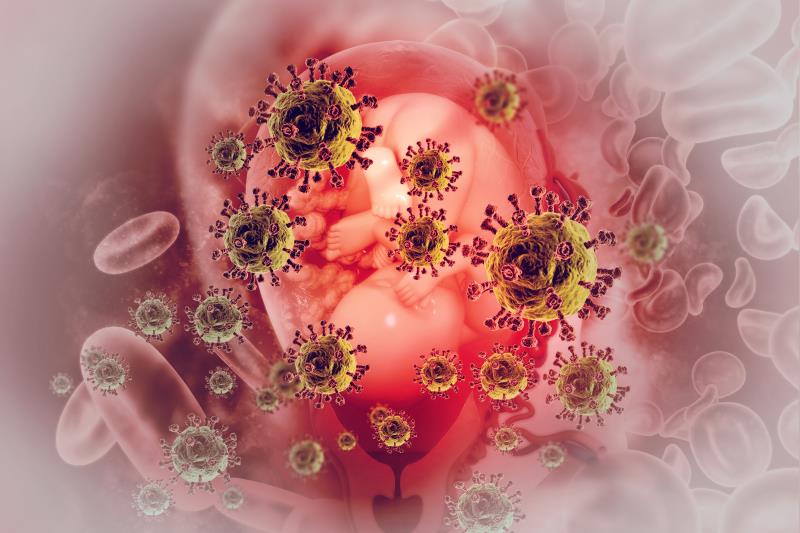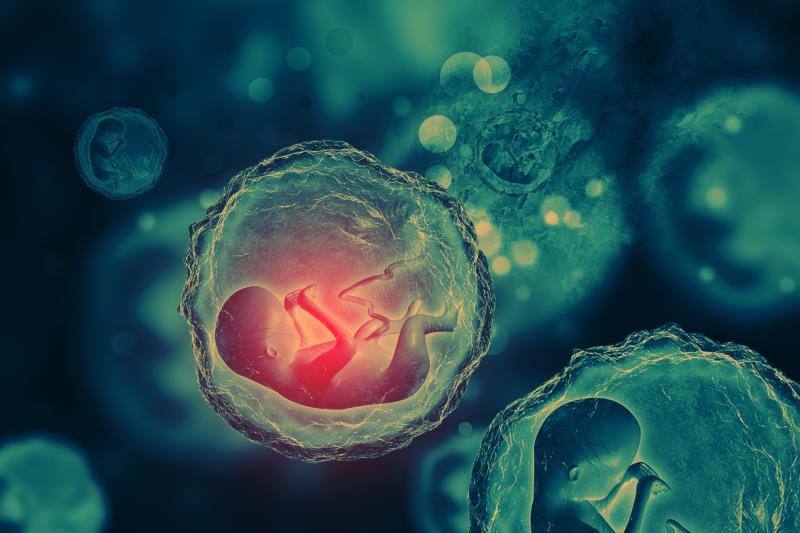Higher rates of maternal vascular malperfusion (MVM) features* and decidual arteriopathy were observed in placentas of women who had coronavirus disease 2019 (COVID-19) during pregnancy, a study has shown.
“There is an emerging consensus that there are problems with coagulation and blood vessel injury in COVID-19 patients … Our findings support that there might be something clot-forming about coronavirus, and it is happening in the placenta,” said senior author Dr Jeffrey Goldstein from the Northwestern University Feinberg School of Medicine in Chicago, Illinois, US, in a press release.
“[O]ur findings indicate that a lot of the blood flow was blocked off and many of the placentas were smaller than they should have been,” said co-author Dr Emily Miller, also from Northwestern University. Any damage to the placenta – which acts as a ventilator for the foetus – may lead to dismal outcomes, she highlighted. “[Our] findings provide some signs that the ventilator might not work as well for as long as we would like it to if the mother tests positive for SARS-CoV-2**.”
Of the 16 placentas examined, 15 (COVID-19 arm) were compared against historical controls (n=17,479) and women with placental evaluation for melanoma history*** (n=215). [Am J Clin Pathol 2020;doi:10.1093/ajcp/aqaa089]
Twelve placentas in the COVID-19 arm had MVM features, a pattern of placental injuries causing insufficient blood flow from the mother to the foetus, which could lead to adverse perinatal outcomes#. [Arch Pathol Lab Med 2016;140:698-713; APMIS 2018;126:589-601] When compared against the control and melanoma arms, the rates in the current study were significantly higher (p=0.046 and p=0.001, respectively).
The incidence of decidual arteriopathy was also higher in the COVID-19 vs the control (p=0.004) and melanoma arms (p<0.001). The most significant comparisons under this feature were observed in the rates of atherosis and fibrinoid necrosis, and mural hypertrophy of membrane arterioles, noted the researchers.
Of the 12 placentas with MVM features in the COVID-19 arm, only two had >3 features. “[This is] our general threshold for a formal ‘top line’ diagnosis of MVM. Thus, while MVM is a useful organizing feature, decidual arteriopathy specifically appears most strongly related to COVID-19, suggesting a different pathophysiology for a different aetiology,” they said.
Other histopathologic abnormalities
Also noteworthy were the higher rates of intervillous thrombi (ie, placental blood clots; n=6) and chorangiosis (n=4) in the COVID-19 arm vs the control (p≤0.001 for both) and melanoma arms (p=0.002 [thrombi] and p=0.01 [chorangiosis]).
Intervillous thrombi are associated with maternal hypertensive disorders or coincident infarctions, while chorangiosis is tied to reductions in maternal oxygen saturation. [Pediatr Dev Pathol 2004;7:26-34; Arch Pathol Lab Med 1984;108:71-74]
“[The thrombi] may represent placental formation or deposition of thrombi in response to the virus,” said the researchers. However, it would be a challenge to draw conclusions given the small population and potential confounders, they added.
Miscarriage and COVID-19
Pathological examination of the case excluded from the analysis (due to intrauterine foetal demise) revealed retroplacental hematoma, a feature of MVM. However, the odds of this being procedural should not be discounted, the researchers pointed out. “[Also, the] patient was asymptomatic, so we do not know whether the virus caused the miscarriage, or it was unrelated,” said Goldstein.
Larger studies are thus warranted to verify the correlation between SARS-CoV-2, acute inflammation, and miscarriage, added Goldstein.
Step up surveillance
The findings are the “appropriate first step” to determine placental anomalies that could be attributable to COVID-19, said the researchers. Further studies should incorporate suitable controls owing to the variability of placental anomalies, they noted.
“Most of the babies were delivered full-term after otherwise normal pregnancies, so you would not expect to find anything wrong with the placentas,” noted Goldstein. “[While] it does not appear to be inducing negative outcomes in live-born infants, [our findings suggest that pregnant] women with COVID-19 should be monitored more closely.”
Antenatal surveillance (ie, non-stress tests, growth ultrasounds) is recommended to verify the potential of COVID-19 to compromise pregnancies, Miller noted. “[While it may be premature] to draw sweeping conclusions from a small study … this preliminary glimpse into how COVID-19 might cause changes in the placenta carries some pretty significant implications for the health of a pregnancy. We must discuss whether we should change how we monitor pregnant women right now,” she said.
*Central and peripheral villous infarctions, villous agglutination, and accelerated villous maturation
**SARS-CoV-2: Severe acute respiratory syndrome coronavirus 2
***Melanoma history is an indication for placental examination (but considered independent of pregnancy outcome), hence some advocating using patients with melanoma as control
#Foetal growth restriction, oligohydramnios, stillbirth, and preterm birth







